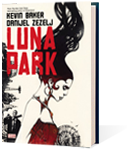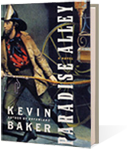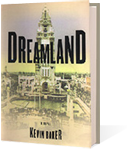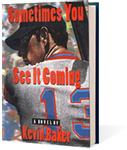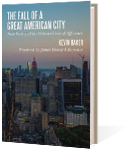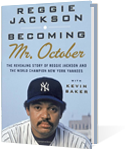One surprising way to understand Monday night’s showdown? An epic battle of the boroughs.
In 1964, when the New York Titans first moved from Manhattan to Shea Stadium, in Flushing, Queens, many wanted to rename the team the “Borros,” a play on “Boroughs.” The name was supposedly nixed because the front office was worried the franchise would be caricatured as “jackasses,” and so the New York Jets were born. (Talk about jackasses.) More likely, the team was worried about being associated with New York’s outer boroughs, long denigrated by Manhattanites as pathetic hangers-on to the island at the center of the world.
There are many people in the rest of America who will see the upcoming debate between Hillary Clinton and Donald Trump—which will take place in another dubious suburb known as Long Island—as an apocalyptic battle between good and evil, or at least evil and not-completely-evil. Predator v. Alien, maybe, or perhaps the anti-Christ v. Mothra. But those of us who live in New York City appreciate it as a different clash of world views: a battle between Manhattan, the world’s capital and the rich, powerful, white-hot center of everything, and Queens, the most Outer Borro-y of the Outer Borros.
On the surface, at least, Trump’s professionally scrappy, Queens attitude is a perfect foil for Clinton’s gilded, Manhattan-eye, insider worldview. Today, Manhattan is more than ever what Theodore White called it more than 50 years ago: “the perfumed stockade.” The capital of globalization, where Hillary Clinton urges us to master the high-tech, globalized future, and where the richest people from around the planet look down on everyone else from skyscrapers climbing literally into the clouds. Queens, by contrast, has been cast as the last ditch of the perpetually embattled, white working class ever since Archie Bunker—the borough’s most famous fictional creation—took his faded, easy-chair throne back in the 1970s. The stubborn, old New York of real neighborhoods and TV antennae (well, maybe satellite dishes) and two-story homes with aluminum siding, whose champion and native son, Trump, wants to turn back time to the days when we were “winning.”
Even if she actually lives north of the city, in Chappaqua, and keeps her campaign headquarters in Brooklyn, Clinton is the quintessential Manhattanite. She is a transplant to a borough and a city full of people who were born elsewhere but came to New York hoping to make it big in the big town. She is sophisticated, worldly and well-traveled, has boundless ambition, and drives herself to the point of a complete breakdown. She has long-held ties to Wall Street, has made vast piles of money in ways the rest of us can only vaguely understand, and somehow her 36-year-old daughter already has a 5,000-foot, $10 million pad off Gramercy Park. What could be more Manhattan? Hillary Clinton and her family can be found running their foundation up in Harlem, or on the society pages at some glamorous benefit at the Met, schmoozing with the high and mighty, until they seem like something out of that Odyssey disco hit from the ’70s: “Up in Harlem, down on Broadway … You’re a native New Yorker!” They may have come from the hinterlands, but there can be no doubt they’ve colonized the place and embraced its diverse, multicultural ethos.
The real native New Yorker is, of course, Trump, now poised to become the only president of the United States born in the city besides Manhattan’s Teddy Roosevelt. He epitomizes his home borough’s history even better than he, or it, likes to acknowledge. Queens might emphasize its working-class roots, but in fact it is chock-a-block with former “garden estates” that a hundred years ago were the gated communities of their day. Trump may talk like Astoria’s Archie Bunker (actually, the house shown in All in the Family was in Middle Village/Glendale), with all of his “yuges” and his hand gestures and patented in-your-face, “I’m tellin’ ya” New York mannerisms that make even friendly conversation seem like machine-gun fire. In reality, The Donald was born and raised in a swank, Tudor Revival home in Jamaica Estates, where his family had a cook and chauffeur, and the first color television in the neighborhood. He started his education at The Kew-Forest School—as in, the Kew Gardens and Forest Hills neighborhoods—a well-regarded private school where he was required to wear a tie and blazer.
Yet if he was not really one of the underdogs he claims to champion, Trump had a Queens attitude right from the start, feisty and defiant. Teachers and fellow students described him as combative, bullying, cocky, fiercely competitive and inexplicably angry. Trump never did bend to the system—it bent to him (at least until his father shipped him off to military school). He led his class in detention and even claimed to have given a second-grade music teacher a black eye because “I didn’t think he knew anything about music.”
“He’s still a simple boy from Queens,” his sister Maryanne recently told the Washington Post.
Yet if the boy from Queens hasn’t changed, Queens itself has, and Trump’s campaign is at its core a simple-minded reaction to that change— something that both instills his candidacy with its force, and makes it a very real danger. What we’re about to see in the debate Monday night is a battle of the boroughs, all right, but one that informs us only if we can look beneath all the archaic stereotypes and see how much both Queens and Manhattan have been transformed in a very short time.
Queens today is, in fact, the most cosmopolitan borough in New York, what Manhattan was 40 years ago without the crime and dysfunction. Its beautiful welter of peoples has produced an amazing array of restaurants in the shadow of the elevated No. 7 train. Stroll through Jackson Heights—once another of those “planned communities,” from which Jews were excluded until the 1940s, and blacks for another 20 years after that—and you’ll encounter thriving Colombian and Mexican communities cheek-by-jowl with the area’s own Little India, Little Pakistan and Little Bangladesh. Flushing no longer plays host to the New York Jackasses, er, Jets, but it boasts the largest of the four Chinatowns in Queens alone.
No one tried harder to preserve the erstwhile, predominantly white Queens of the Donald’s childhood than his developer father, Fred, who was caught repeatedly refusing to rent his middle-class apartments to people of color. But that “idealized” version of Queens was changing rapidly even in Archie Bunker’s time, and it’s long gone now. By 1988, nearly half of the borough still identified as non-Hispanic white; today, just over one-quarter does. By 2000, Queens was already the most diverse county in the nation, and in the next 10 years, another 116,000 whites moved out. The black population also decreased slightly, with both black and white replaced increasingly by people born in Latin America or Asia. Today, almost half of Queens is foreign-born. And voting patterns have followed demography. In 1956, around the time when a young Trump was still bopping music teachers in the eye, Dwight D. Eisenhower pulled nearly 60 percent of the borough’s vote in his reelection bid. No Republican presidential candidate has carried Queens since 1972, and none has carried more than a third of its vote since 1988.
Donald himself might embody the Queens underdog spirit, but like so much of his life and career, it’s largely show. Unlike his racist dad, who at least erected mostly middle- and working-class housing, young Donald was always hell-bent on leaving Archie Bunker’s place and building for the eliterati over in Manhattan. In a line from his own bio video at the Republican National Convention (which must have set a million Queensians’ blood to boiling), the narrator told us that a young Trump had faced a choice: whether to remain in Queens and with his father’s business or whether to “try to make it in the city.” Trump has never looked—or gone—back. Instead of paying any attention to the remarkable ways in which his home borough has flourished as the leading enclave of diverse, post-white-man’s America, Trump would stand athwart the 59th Street Bridge crying, “Stop!” to history. He doesn’t see, or he doesn’t want to see, that Archie has left the building, and he ain’t comin’ back.
Clinton, too, has a more complicated relationship with her borough—given her policy-wonk earnestness and sincere Midwestern Methodist roots. Today, she wants to be the inclusive, communitarian candidate to the world, but she’s found herself increasingly cut off from the concerns of working people, white or of color, spending more and more of herself giving speeches to Goldman Sachs execs and castigating all those deplorables. That’s because, more than 35 years ago, Bill and Hill decided to abandon the traditional liberalism of the Democratic Party, which had done so much to lift up and protect the working people of places like Queens. They made the calculation that Americans’ future, maybe with some strategic boosts from the government, lay in embracing the globalized, paper economy.
No place more brazenly exemplifies the sort of self-dealing that the chief beneficiaries of that economy have indulged in, or the yawning fissures that they have created in our society, than today’s Manhattan. The ambitious young minds and enterprises the borough used to draw have been turned away by its monstrous real estate prices, to the point where it’s begun to feel like the country’s largest gated community. As a presidential candidate, Clinton seems to want to escape the cocoon of wealth and power, but she comes across as inauthentic when she does.
Ironically, while the strivers and dreamers Trump so eagerly wants to ban from this country flock to Queens, it is Manhattan that’s filling up with the only sorts of immigrants he finds acceptable, the incalculably wealthy of the world, yearning to breathe tax-free. In fact, you could say Trump built this city (or at least a few, heavily subsidized blocks of it). The super-predators of global wealth don’t care a fig for the cultural glories of the old Manhattan elite. They’re fine living—or more likely, visiting for a couple weeks out of the year—in the sorts of faceless, gargantuan buildings that Trump specialized in putting up, back when he still pretended to do honest work. There isn’t much aluminum siding in Manhattan, but its glass-and-marble, ticky-tack feels just as generic these days, its streetscapes in many neighborhoods rapidly becoming the same, cultural desert of chain stores as those that can now be found anywhere in America.
In a sense, both candidates, at one time or another in their lives, fell for the glittery surface of Manhattan: Hillary looking to lead it, Trump to ape it. That was all good with The Donald because, hey, he made some money off his Manhattan ventures (thanks mainly to that estimated $885 million in government subsidies), and was first able to parlay his experience there into the mythology that he is A Man Who Gets Things Done when no one else can. The Bernie Sanders Show, by contrast, did force Clinton to listen to people from the new America of Queens, and she still has a plan—or a dozen, or a hundred plans—to put a human face on globalization, to curb its excesses and to make it work for all. Whether anyone still finds her convincing is another question. In these debates, she is going to have to show that she is not just one more, privileged denizen of the perfumed stockade trying to explain herself, but an actual leader. She can still do it, but the hour is very late.
Read more: http://www.politico.com/magazine/story/2016/09/clinton-trump-2016-debate-nyc-manhattan-queens-214284#ixzz4LKHVNXzv
Follow us: @politico on Twitter | Politico on Facebook

